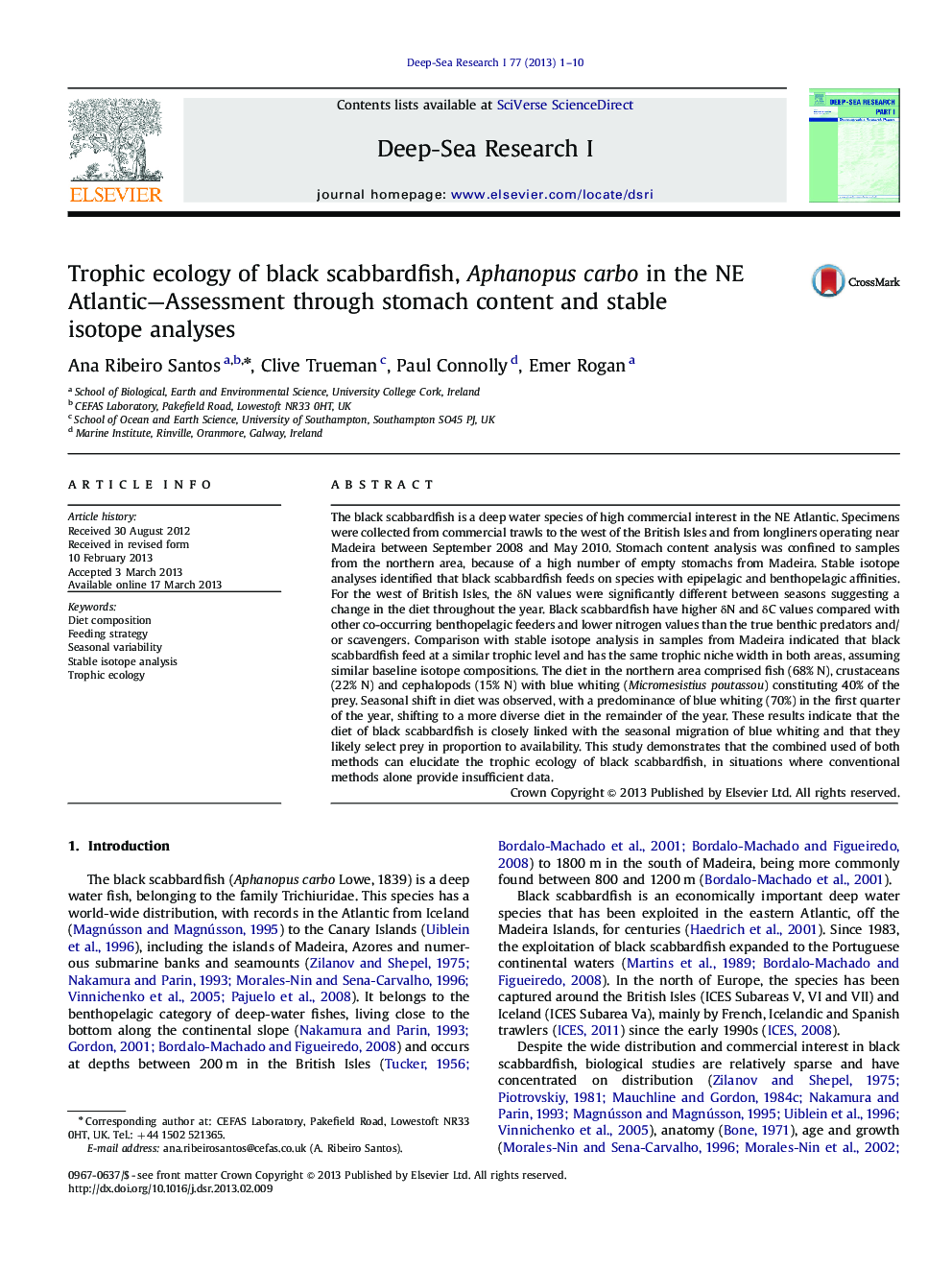| کد مقاله | کد نشریه | سال انتشار | مقاله انگلیسی | نسخه تمام متن |
|---|---|---|---|---|
| 4534659 | 1626353 | 2013 | 10 صفحه PDF | دانلود رایگان |

• We studied the diet composition and trophic ecology of black scabbardfish.
• Blue whiting is the main prey item (40%) and seasonal shifts in the diet were observed.
• Stomach contents and stable isotopes showed that black scabbard is a top benthopelagic predator.
• Black scabbard forms a link between the pelagic and the benthopelagic food webs
The black scabbardfish is a deep water species of high commercial interest in the NE Atlantic. Specimens were collected from commercial trawls to the west of the British Isles and from longliners operating near Madeira between September 2008 and May 2010. Stomach content analysis was confined to samples from the northern area, because of a high number of empty stomachs from Madeira. Stable isotope analyses identified that black scabbardfish feeds on species with epipelagic and benthopelagic affinities. For the west of British Isles, the δN values were significantly different between seasons suggesting a change in the diet throughout the year. Black scabbardfish have higher δN and δC values compared with other co-occurring benthopelagic feeders and lower nitrogen values than the true benthic predators and/or scavengers. Comparison with stable isotope analysis in samples from Madeira indicated that black scabbardfish feed at a similar trophic level and has the same trophic niche width in both areas, assuming similar baseline isotope compositions. The diet in the northern area comprised fish (68% N), crustaceans (22% N) and cephalopods (15% N) with blue whiting (Micromesistius poutassou) constituting 40% of the prey. Seasonal shift in diet was observed, with a predominance of blue whiting (70%) in the first quarter of the year, shifting to a more diverse diet in the remainder of the year. These results indicate that the diet of black scabbardfish is closely linked with the seasonal migration of blue whiting and that they likely select prey in proportion to availability. This study demonstrates that the combined used of both methods can elucidate the trophic ecology of black scabbardfish, in situations where conventional methods alone provide insufficient data.
Journal: Deep Sea Research Part I: Oceanographic Research Papers - Volume 77, July 2013, Pages 1–10